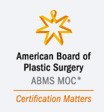An increasing number of patients in recent years are choosing to undergo second and even third facelifts (Rhytidectomies) according to the March issue of the official medical journal of the American Society of Plastic Surgeons (ASPS), Plastic and Reconstructive Surgery®. As the American middle-aged population continues to grow, so too does the popularity in facial rejuvenation at ever earlier ages. Facelifts are becoming more and more popular for younger and younger demographic age groups, leading to significant increases in secondary facelifts and even tertiary facelifts.
And with good reason: “Performed an average of a decade after initial facelift surgery, a “secondary” facelift can achieve similarly lasting results with a low complication rate” according to the paper. The paper is based on a study of over 800 facelift operations conducted from 1990 through 2010, of which 60 were secondary facelifts, and which found the initial facelift maintained its results for an average of nine years for this group of patients. (The average age of this group was 51 years at the time of the initial facelift and 60 years at the time of the second facelift.) Of these 60 patients, 10 subsequently received a third facelift an average of 7.5 years after the second facelift, which strongly suggests secondary facelifts last almost as long as first facelifts. Moreover, there was no increased risk or complication with additional facelifts.
Researchers concluded that with adherence to some key surgical principles a second facelift can be “a safe and effective procedure” for treating recurring signs of facial aging and restoring a natural and youthful appearance.
Dr. Salemy has performed a number of subsequent secondary facelifts in his Seattle and Walla Walla practice, typically as secondary facelifts for patients who received their initial facelift with other plastic surgeons. And while Dr. Salemy agrees the average time to a second facelift is about 10 years, this length of time will vary depending on a number of factors: the patient’s health, skin quality, and ethnicity and the age at which the initial facelift was received. Additionally, Dr. Salemy adds that the younger age at which the initial facelift was received, the more durable the results.
Have you considered a secondary facelift? Or even considered accelerating your timetable for an initial facelift based on studies like these?
Source: Wolters Kluwer Health. “Most Patients Found To Have A Successful Second Facelift 10 Years After The First.” Medical News Today. MediLexicon, Intl., 2 Mar. 2013.















